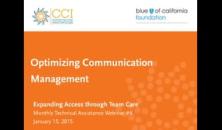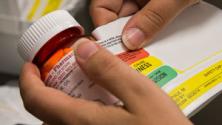What is the challenge?
Typical primary care practice is deluged every day with requests, messages, and paperwork via telephone, Electronic Health Record (EHR), email, patient portal, fax, etc. Many practices don’t plan for, triage, or systematically act upon incoming communications. This puts patients at risk and burdens providers and other staff (often at the end of a busy day) with a backlog of work that could and should have been done earlier and often more effectively by others.
What needs to change?
To ensure that each request, message, or paperwork is acted upon promptly, safely, and effectively, practices need to:
- Continuously track demand and performance if possible.
- Have goals, designated staff, and standard work in place for the monitoring and initial action for each request or message type.
- Maximize first call or contact resolution to eliminate or at least minimize queues and handoffs.
- Set aside time for staff to do same-day message management as part of standard work.
- Ensure the availability of same day care to reduce the need for telephone triage.
- Reduce the volume of incoming messages by ensuring clear communications with patients, families, and caregivers.
What do we gain by making these changes?
Efficient management of incoming communications addresses a major source of frustration for patients and caregivers. Patients get their questions answered, their medications refilled, and their forms completed when they need them. Providers get more time to spend with their patients and aren’t faced with a stack of telephone and email messages at the end of an exhausting day.
- Develop standard work for handling major forms of communications.
Figuring out how best to resolve phone calls, email messages from patients, refill requests, etc. needs to involve staff members who are likely to be involved. A first step is the establishment of goals for each communication type, which usually address time to resolution, and the number and types of handoffs (e.g., 95 percent of phone requests are resolved on the first call). The standard work processes will be heavily influenced by the goals. Some LEAP practices share those goals with their patients (e.g., we will answer your email within 12 hours). For larger practices, a recurring question is whether to centralize the handling of various communications or send them directly to the patient’s core practice team. The advantage of the latter, if feasible, is the team’s knowledge of their patients.
- Designate and train staff to handle major types of communications.
As with all elements of primary care work, a major goal is to have communications handled by staff working at the top of their license. To have an RN triage all incoming patient calls or to have a provider fill out paperwork for routine refills is not working at the top of their license. Several LEAP practices developed work flows that first maximize what can be done by administrative/front desk staff (e.g., initially triage incoming messages, make appointments, put available information into forms). Where permitted by nursing licensure, they sometimes used LPNs rather than RNs to triage patient phone calls or emails, and only referred on to RNs or providers those contacts requiring clinical assessment and decision making. Medical records staff can be trained in data extraction and data entry in the Electronic Health Record. This significantly decreases the amount of time nurses and providers spend reviewing the inflow of paper information about patients.
- Reduce hand-offs and make them quickly.
Many communications of necessity require more than one person to resolve. Examples would be patients calling with potentially serious complaints. Resolving issues or answering questions before hanging up the initial call has many advantages, but can put patients on seemingly endless hold. Effective handoffs are facilitated by work flows that try to route calls directly to the individual who can resolve it. Because that individual is often the provider, practices need to design space in the day to do this work, set time expectations for provider involvement, and clarify how provider calls will be managed. For example, providers vary in their willingness to be disturbed when with a patient. Several LEAP practices use electronic inboxes to get communication work done. An increasingly important role for MA/LPN dyad partners is to help their provider partners monitor and manage their inbox.
- Routinely monitor demand and the extent to which communication goals are met.
Many things—such as staff vacations, new personnel, flu epidemics, emergencies—can alter demand and disrupt communication workflows. For this reason, it is very useful to periodically measure the volume and nature of incoming phone calls, paper communication, and emails. Monitor efficiency measures, such as percent of first calls resolved, average hold time, and patient satisfaction or complaints about phone or email access. It’s also important to measure the backlog of clinical information on paper that is waiting for review by the provider. First, identify and measure the areas that need attention, then use performance improvement tools and test cycles to make adjustments.
- Try to reduce the volume of incoming communications.
The effective management of appointments, patient visits, and refills can reduce the number of incoming calls/emails. It has been estimated that as many as half of all phone calls to a practice are from patients seen in the past week. To reduce these calls, try:
- Improving post-visit education and using teach-back to improve patient understanding.
- Notifying patients of all lab results, normal or abnormal, through the mail or web portal.
- Consider using Electronic Health Record data to proactively refill medications before they expire and use the longest refill length that is clinically appropriate.
Publications
LEAP Learning ModuleOther helpful topics included in this website
WorkflowTemplates, flow sheets and mapping aids
Webinar and power point presentations
Role featuresJob descriptions, career ladders and other HR materials
If you have a question about the improvements, action steps, or tools & resources in this module please let us know. We're here to help. And if we can't answer your question, we can probably connect you with someone who can.











